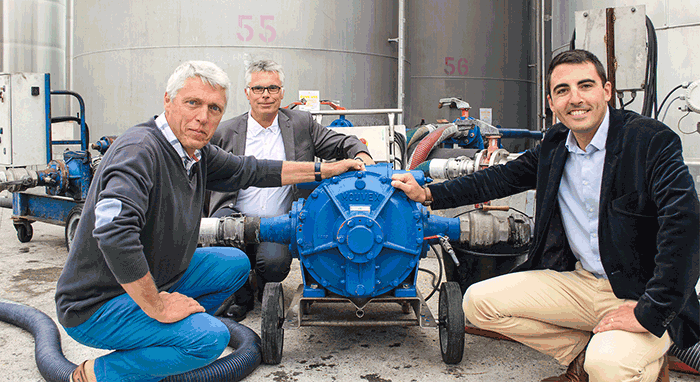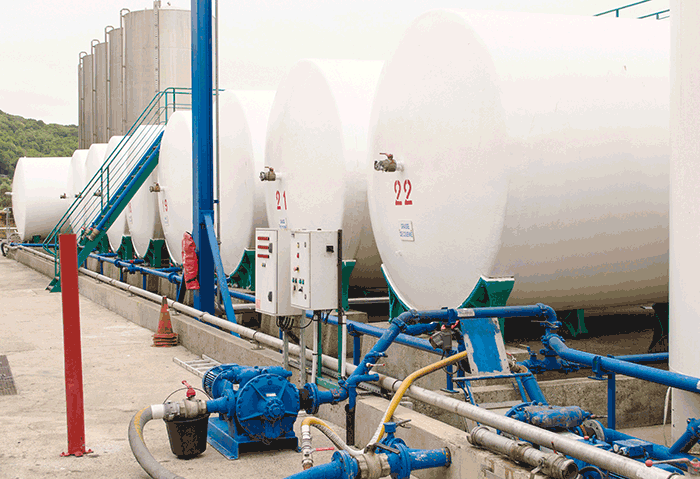The day in 1990 that Francois Daudruy joined what is now known as the OLVEA Group as its technical director was a proud one for him. That is because he became part of the third generation of Daudruys to operate the company that had been founded by his grandfather, Charles Daudruy, in 1929 in the small town of Fecamp, close to the English Channel in the northwest of France, as a supplier of cod-liver oil for human and animal consumption. Then it was time to go to work, and Daudruy knew that the only way his grandfather’s company could continue to grow and prosper was if some noteworthy changes were made in the way the fish, lard and vegetable oils were handled, stored and packaged. The fish, lard and vegetable oils that arrived at the Fecamp plant for processing were to be used for specific end products. This included the creation of cosmetics, pharmaceuticals, human food and animal feed, as well as various technical uses, such as the building of lasers and as lubricants for leather and metal work. This process required strict purity for the oils as they moved from transport truck to storage tank to 330-gallon intermediate bulk containers (IBC) and 50-gallon drums, meaning that no cross-contamination could be tolerated. Additionally, because of the high value of the oils, any products that were left in the transport truck, storage tank or hoses after the transfer process was completed would essentially be lost during the necessary cleaning procedure.
 Image 1. Since its founding in 1929, France-based OLVEA Group has led the way as a European leader in the supply of fish, lard and vegetable oils for food production. (Image courtesy of Mouvex)
Image 1. Since its founding in 1929, France-based OLVEA Group has led the way as a European leader in the supply of fish, lard and vegetable oils for food production. (Image courtesy of Mouvex)The Perfect Replacement
At the time of Daudruy’s arrival, the company had begun experimenting with eccentric disc pumps. Specifically, they were testing one model for the transfer of the oils from storage tanks to shipping containers and a type of vane pump for the unloading of transport trucks. Eccentric disc pumps are driven by an eccentric bearing that is installed on the pump shaft. This creates four distinct pumping chambers that increase and decrease in volume as the disc is rotated by the eccentric bearing, producing both suction and discharge pressures as the chambers move in pairs that are 180 degrees apart. This method of operation ensures that the fluid passes through the pump at a constant and regular flow rate. The eccentric disc pumps feature self-priming capabilities that enable dry-running and pipe-clearing operation. An automatic clearance makeup system maintains initial performance levels over time without the need for adjustment. Constant output is also maintained even as product viscosities and delivery pressures vary, which allows the pumps to reliably handle viscous, non-lubricating, volatile or delicate liquids with no shear. The vane pumps use the rotation of the pump rotor and vanes to transfer liquids from the suction to the discharge side of the pump body in a continuous movement. This method of operation allows the pumps to be used in a large range of applications that involve the transfer of thin to viscous fluids, whether they are non-lubricating, abrasive or corrosive. The vane-style design also allows the pumps to deliver exceptional volumetric performance and reliability, which leads to reduced energy consumption. Maintenance is easy since the vane pumps can be dismantled in place without the need to disconnect the suction and discharge lines. “When we unload trucks and air arrives in the pump, the pump continues operating and empties the lines, which is important for us,” Daudruy said. “Even when the truck is empty, the pump pushes the air in the tank and we can empty the pipes.” Image 2. As part of its process, OLVEA Group uses large storage tanks to house the oil prior to transferring it to 330-gallon IBCs and 50-gallon drums.
Image 2. As part of its process, OLVEA Group uses large storage tanks to house the oil prior to transferring it to 330-gallon IBCs and 50-gallon drums.
